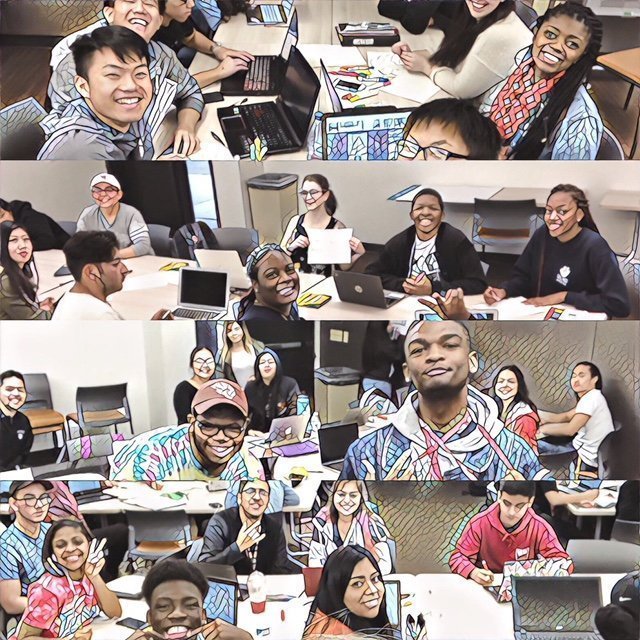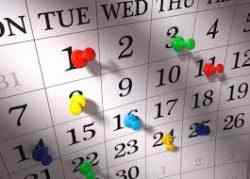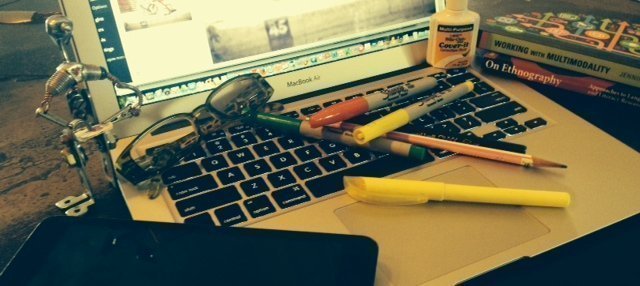
Assignments
Reading & Annotating in Perusall (25 points total)
various due dates
We’ll read together using a platform called Perusall. In a nutshell, we are working more like I work with colleagues when we read together: we are reading and sharing comments together. Some readings you’ll have more to say than others, but I hope you see the comments as a generous act for our community: you can pose a question, link to something an idea reminds you of, try to summarize a challenging sentence or section, define a term, etc. I also really appreciate when we respond to other people’s comments, perhaps engaging in a dialogue or trying to answer someone’s question.
Short Paper 1: initial thoughts about language (20 pts)
Due: Monday, Aug 30
In this first short paper, I’m hoping we learn a bit about everyone’s access to various language communities and our initial thoughts about language.
Some questions to consider:
What are your earliest memories of learning to talk? To read and write?
Do you speak, text, dress, behave differently in various communities? When do you use slang?
Does your family speak a language in addition to English at home? Does your family only speak in a language other than English at home? Do you speak a variety of languages? When do you decide to use different languages? Have you ever been cautious about when to speak in one language over another?
What has been your experience with language in school? How about how you talk with friends versus your professors versus your work or family? How does this shift?
Do you think there is one way everyone should speak? Why or why not? Has anyone ever tried to impose their way of speaking/writing on you?
These questions are meant to be helpful, so you certainly do not need to answer all of them. Perhaps take a few that are productive to write about. Let’s try for 2(ish) pages. Our goal: get a sense of the experiences with language in our class.
You’ll share this in a Google Doc with me: kjaxon@mail.csuchico.edu (and we’ll also set the share settings to “anyone with the link can comment.” I can show everyone in class too.)
Paper Start 2 & 3 and revision (20 pts each)
Due: Sept 27 & Oct 11; Revision due Oct 25
We’ll get started with three different papers–the “initial thoughts” paper explained above plus two more–what I am calling “paper starts.” Each paper start will focus on some of the ideas we’ve been reading and discussing in class together; think of these 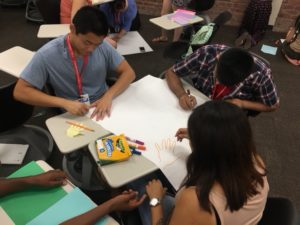 as drafts for ideas that you could turn into more polished ideas later. We’ll use some of the readings as “mentor texts” that I hope will model or inspire ideas for writing. You’ll turn one of the paper starts into a full, revised draft. We’ll also give each other feedback on these papers and consider ideas that could be interesting for our larger projects this semester.
as drafts for ideas that you could turn into more polished ideas later. We’ll use some of the readings as “mentor texts” that I hope will model or inspire ideas for writing. You’ll turn one of the paper starts into a full, revised draft. We’ll also give each other feedback on these papers and consider ideas that could be interesting for our larger projects this semester.
Each paper start will be 2-3 pages. Share in Google Docs with Kim: kjaxon@mail.csuchico.edu and also set the share settings to “anyone with the link can comment.”
Paper Start 2: language autobiography (Monday, Sept 27)
We’ll look closely at Anzaldúa’s “How to Tame a Wild Tongue,” especially the beautiful way she weaves Spanish and English together in her writing. Ideally, this paper start will support trying out our own language autobiographies. Revised: we’ll combine our paper and artifact this week by creating a multimodal paper using Adobe Spark.
Some resources as you compose:
You could expand ideas from Paper 1: look over paragraphs in your first essay, identify an idea to expand on, and write from that place.
Some prompts to write to if you want to start a new draft: describe your literate life (what do you read, watch, write and for what purpose?); talk about your earliest memories of learning languages; talk about your changing relationship with reading/writing over time.
Gather quotes, sayings (Anzaldúa, some of the TED talks and spoken word we’ve watched?, from your family? song lyrics?)
Gather images (video, photos…). Link to Chico State flickr
Gather links (websites, readings?)
Think about how these parts (image, your words, the words of others) can go together with some intention using an Adobe Spark theme. What role does color, font choice, image, words, quotes play in making meaning in your text?
On Monday, Sept 27 we’ll share the links to our Adobe Spark pages during class.
Paper Start 3: language policy (Monday, Oct 11)
Start by doing some summary work with April Baker-Bell’s chapter
Then, also choose one of these language policies to work with:
- https://cccc.ncte.org/cccc/resources/positions/ebonics
- Students’ Right to Their Own Language (with bibliography)
- https://ncte.org/statement/ipoc/
Review these texts and then write a paper that address these questions:
- What is Baker-Bell talking about? Walk the reader through the ideas in her chapter: the writer starts by…, then she…, next, she…then she ends with…what I might call a slow, thorough summary. Use a quote or two from the chapter to support your summary of the ideas.
- Next, summarize one of the policy documents: who wrote it, what do they care about, what is the focus, what changes do they hope comes from the policy? Quote some from the policy document.
- What do you think about the ideas in the chapter and the policy document? What is interesting or puzzling? What questions are you left with?
- Finally, you could end the paper by trying out one of these ideas:
- How might you use these ideas (from the article and the policy) to understand your language autobiography?
- Or, what might you research next about language and identity now that you’ve summarized these texts and written about your language use?
- Or what would be your language policy (you could make you own bulleted list)?
- Works Cited/References: End by citing the chapter and policy document using whatever citation form you prefer (MLA, APA, other?).
Some examples from a previous semester can be found here
Revised/Remixed Paper Starts (Monday, Oct 25)
You’ll work with the feedback from your first three drafts and revise/remix into a more polished draft.
Artifacts (15 pts each)
Due: Sept 8, Sept 27, Oct 18
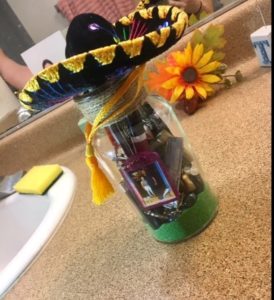 In addition to papers, we’ll also create artifacts that represents the ideas we’re discussing. I use artifacts to meet a couple of goals: 1) to invite students to have full control over the things we compose in this class: you decide on the materials, the processes, the products, the distribution of a thing you make; and 2) to try out various ways of composing so we can consider purpose and audience with a variety of texts. You can create a short film, give an Ignite talk, create slam poetry, write a song, create art, blackout poetry…lots of possible ways to share. You can decide to do your own thing or work in pairs or teams.
In addition to papers, we’ll also create artifacts that represents the ideas we’re discussing. I use artifacts to meet a couple of goals: 1) to invite students to have full control over the things we compose in this class: you decide on the materials, the processes, the products, the distribution of a thing you make; and 2) to try out various ways of composing so we can consider purpose and audience with a variety of texts. You can create a short film, give an Ignite talk, create slam poetry, write a song, create art, blackout poetry…lots of possible ways to share. You can decide to do your own thing or work in pairs or teams.
You will also write a brief artist’s/writer’s statement explaining what you were attempting to do with this artifact: how did you approach this artifact? what worked? what did not work out as planned?
We’ll bring the artifacts to class (on laptops or tablets if they’re digital) and share in a gallery walk. You’ll share the statements in a Google Doc with Kim: kjaxon@mail.csuchico.edu and also set the share settings to “anyone with the link can comment.”
Peer Response (10 pts each)
Due (in class work): Aug 30, Sept 27, Oct 11 & Nov 17
We’ll give peer feedback to all of the paper start drafts. We’ll create some guiding questions and guidelines together for our feedback.
Project (65 pts total)
Curated Resource & Memo due Nov 8 (25 pts); draft multimodal Project due Nov 17; revision due Dec 6 (40 pts)
Curated Resource & Memo (Nov 8):
For three weeks, you’ll keep track of your research: the things you are reading, watching, gathering. You’ll share a Google Doc with us as you find links to articles, videos (Ted talks or films or?), etc that help you understand your area of interest. Under those links, you’ll write a short summary that helps you and others know:
- what the text is about (1-2 paragraphs)
- how it helps you with your research (does it provide some background info? Some data? An argument? A good model for how you might write about the ideas?)
You should have multiple links and summaries in the document that is due Nov 8. These resources will help you to create your multimodal composition that follows. The number of sources really depends on what you’re researching, but I’m asking you to find at least two sources a week for three weeks (6 total). They may not all be connected to the same idea since it is likely your research questions will change as you move through the process; that is a normal part of research.
By Nov 8, I’ll ask you to write an introduction (a memo) to the Curated Resource. Think of this as an overall summary of your research process: how you searched, what you learned, what was challenging…along with some synthesis of the sources. Basically, you’ll provide some context for your Curated Resource. This will be 1-2 pages. Here are the guiding questions:
- Why are you interested in this research? Is there something that made you want to know more?
- How have you found sources so far? What has been your process for looking for sources? What have you found?
- What have you learned so far from your research?
- What do you need to do next for your research? And, what kind of project can you imagine writing/making from what you have so far? What might go into the project?
- Then a summary of at least 6 sources (this should be done from our research work). This is the annotated bibliography part.
- Here is an example from a former student.
- Here is the link to the Scoring Rubric for this assignment, which we will use together as part of peer feedback.
Multimodal Project (draft due Nov 17; revise by Dec 6)
You will create and share your multimodal project (video essay, hypertext essay, website, podcast, game design, hermit crab essay, curated resource…). We’ll collaborate on the criteria for the projects based on your goals and interests. We’ll share these projects during final’s week.
Reflection (20 pts)
Due: final exam day
We’ll create reflective essays using Adobe Spark.
- Create an account on Adobe Spark by clicking on the “Get Started Now” button. You will be creating an Adobe Page.
- Go through everything you’ve created and written for our class. Read through your papers and look over your artifacts. Collect some examples of things you are proud of: sentences, paragraphs, artifacts,…collect things that demonstrate work you like and things you have learned.
- Find some images or links to videos that you can use on your Adobe Spark page…pictures of your freshman year perhaps?
Reflection Assignment–Read through your work and respond to these questions:
- What have you learned? What have you learned to do?
- Explain what you consider to be your “best” writing of the semester (Be sure to define your criteria for “best” and to cite specific parts of your texts).
- What do you wish you had learned? What can you do with what you have learned?
- How have you contributed to our class? What role do you play in here? Are you pleased with your membership role/participation in the class?
- If you want, you might reflect on your first year in college: what did you learn overall about yourself, about college, about ideas? What advice would you give to yourself if you could go back to the start of the semester?
- Be specific. Quote yourself or link to your work where helpful.
- Share the link to your Adobe Spark with Kim. (I’ll create a form for gathering the links)
